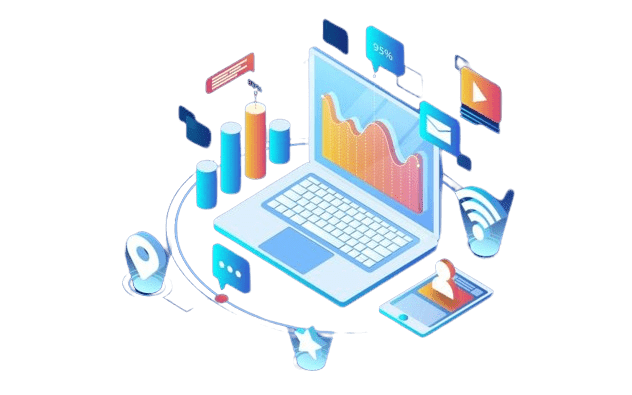In the ever-evolving landscape of Artificial Intelligence (AI), two terms often take center stage: machine learning and deep learning. While both play a crucial role in enabling machines to learn and adapt, they have distinct characteristics and functionalities. This comprehensive guide delves into the core differences between deep learning and machine learning, equipping you with a clear understanding of these powerful technologies.
Introduction to Deep Learning and Machine Learning
Understanding Machine Learning
Machine learning (ML) is a subfield of AI that empowers computers to learn from data without explicit programming. It utilizes algorithms that can identify patterns and relationships within data, allowing them to make predictions or decisions on new, unseen data. There are two primary categories of machine learning:
- Supervised Learning: In supervised learning, the data is labeled, meaning it has a predefined outcome or target variable. The machine learning model learns the mapping between the input data and the desired output by analyzing these labeled examples. Common supervised learning algorithms include linear regression, decision trees, and support vector machines.
- Unsupervised Learning: Unsupervised learning deals with unlabeled data, where the data lacks predefined categories or outcomes. The goal here is to uncover hidden patterns or structures within the data. Unsupervised learning algorithms are often used for tasks like clustering (grouping similar data points together) and dimensionality reduction (compressing high-dimensional data for efficient processing).
Machine learning has revolutionized various industries, from finance and healthcare to retail and manufacturing. It powers recommendation systems, spam filters, fraud detection tools, and many other intelligent applications.

Exploring Deep Learning
Deep learning, on the other hand, is a subset of machine learning inspired by the structure and function of the human brain. It leverages artificial neural networks (ANNs), complex algorithms that mimic the interconnected network of neurons in the brain. These ANNs are composed of multiple layers, with each layer processing the information received from the previous layer and transmitting it to the next.
Deep learning excels at handling complex, high-dimensional data such as images, text, and audio. Unlike traditional machine learning algorithms that require feature engineering (manually extracting relevant features from data), deep learning models can automatically learn these features from raw data through a process called representation learning. This makes deep learning particularly powerful for tasks like image recognition, natural language processing (NLP), and speech recognition.
Evolution of Artificial Intelligence
The field of AI has seen significant advancements over the years. Early AI techniques relied on rule-based systems, where experts defined a set of rules for the computer to follow. However, these systems were limited in their ability to handle complex tasks and adapt to new situations. Machine learning emerged as a more flexible approach, enabling computers to learn from data and improve their performance over time.
Deep learning represents the latest leap forward in AI. With the increasing availability of massive datasets and advances in computing power, deep learning models have achieved remarkable results in various domains. As deep learning research continues to evolve, we can expect even more groundbreaking applications in the years to come.

Differences Between Deep Learning and Machine Learning
While both machine learning and deep learning fall under the umbrella of AI, they have some key differences:
Data Representation and Feature Extraction
- Machine Learning: In machine learning, the data needs to be preprocessed and transformed into a format suitable for the chosen algorithm. This often involves feature engineering, where domain experts manually identify and extract relevant features from the data.
- Deep Learning: Deep learning models excel at representation learning. They can automatically learn features from raw data through their multi-layered architecture. This eliminates the need for manual feature engineering, saving time and potentially improving model performance.
Complexity and Hierarchy in Learning
- Machine Learning: Machine learning algorithms typically have simpler structures, with a single layer of processing units. This limits their ability to learn complex patterns from high-dimensional data.
- Deep Learning: Deep learning models utilize artificial neural networks with multiple layers, also known as neural network architecture. This hierarchical structure allows them to learn intricate relationships within the data. Common deep learning architectures include convolutional neural networks (CNNs) for image recognition and recurrent neural networks (RNNs) for sequence data like text or speech.
Applications and Use Cases
- Machine Learning: Machine learning has a wide range of applications across various industries. It is used for tasks like:
- Spam filtering
- Fraud detection
- Recommendation systems
- Customer segmentation
- Stock price prediction
- Deep Learning: Deep learning is particularly well-suited for tasks involving complex data, such as:
- Image recognition (facial recognition, medical imaging analysis)
- Natural language processing (machine translation, sentiment analysis)
- Speech recognition (voice assistants, virtual agents)
- Generative models (creating realistic images, text, or video)

Applications in Various Industries
Both machine learning and deep learning are transforming numerous industries. Here are some examples:
- Healthcare: Machine learning algorithms are used to analyze medical images for early disease detection, such as analyzing mammograms for signs of breast cancer. Deep learning can further improve accuracy in tasks like tumor segmentation and drug discovery.
- Finance: Machine learning is used for fraud detection in financial transactions and credit risk assessment. Deep learning can be employed for high-frequency trading and algorithmic stock picking.
- Retail: Recommendation systems powered by machine learning personalize product suggestions for customers. Deep learning can analyze customer behavior and predict future purchases with greater accuracy.
- Manufacturing: Machine learning algorithms can predict equipment failure and optimize production processes. Deep learning is used for visual inspection of products to ensure quality control.
- Transportation: Machine learning is employed in route optimization for delivery services. Deep learning plays a crucial role in developing self-driving cars by enabling real-time object recognition and decision-making.
- Security and Surveillance: Machine learning algorithms can analyze video footage to detect suspicious activity. Deep learning is used for facial recognition in security systems and anomaly detection in cybersecurity.
Future of Deep Learning and Machine Learning
The future of deep learning and machine learning is brimming with exciting possibilities. As computational power continues to grow, and researchers delve deeper into these fields, we can expect significant advancements:
- Explainable AI (XAI): One of the key challenges in deep learning is the “black box” nature of some models. XAI research aims to develop techniques that make deep learning models more interpretable, allowing us to understand their decision-making processes. This is crucial for building trust and ensuring fairness in AI applications.
- Lifelong Learning: Humans can continuously learn and adapt throughout their lives. Machine learning and deep learning models are being developed to achieve similar capabilities, enabling them to learn from new data and improve their performance over time. This will allow them to adapt to changing environments and perform more effectively in real-world scenarios.
- Neuromorphic Computing: This emerging field focuses on developing hardware inspired by the human brain. Neuromorphic chips could significantly improve the efficiency and speed of deep learning models, paving the way for even more complex applications. This could lead to the creation of more intelligent and autonomous systems.
- Integration with Other AI Techniques: Machine learning and deep learning will likely be increasingly combined with other AI techniques like symbolic reasoning and planning to create more robust and intelligent systems. Symbolic reasoning allows for logical deduction and knowledge representation, while planning enables systems to make decisions and achieve goals. This convergence will lead to the development of more comprehensive and versatile AI solutions.
The ethical implications of deep learning and machine learning also require careful consideration. Issues like bias in data and algorithms, and the potential job displacement due to automation, need to be addressed to ensure responsible development and deployment of these powerful technologies. Fairness, transparency, and accountability are crucial aspects to consider when building and using AI systems.
Conclusion
In conclusion, both deep learning and machine learning are revolutionizing the world around us. By understanding their core differences and functionalities, we can leverage them to solve complex problems, create innovative solutions, and shape a brighter future. As these fields continue to evolve, it will be exciting to see the groundbreaking applications that emerge and the positive impact they have on various aspects of our lives.




